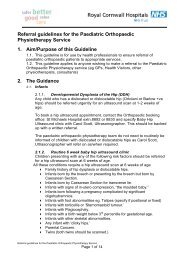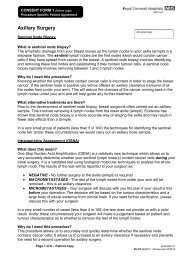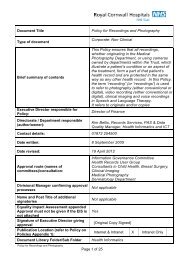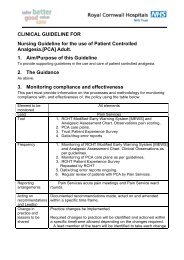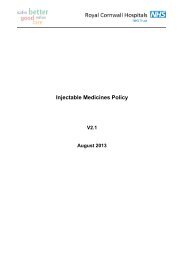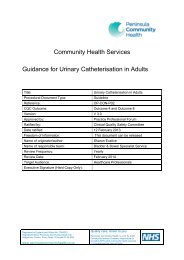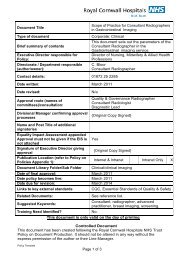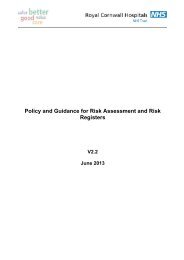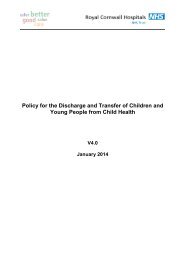Policy for the Prescription, Administration and Monitoring Of Oxygen ...
Policy for the Prescription, Administration and Monitoring Of Oxygen ...
Policy for the Prescription, Administration and Monitoring Of Oxygen ...
- No tags were found...
You also want an ePaper? Increase the reach of your titles
YUMPU automatically turns print PDFs into web optimized ePapers that Google loves.
Table 4. Conditions <strong>for</strong> which patients should be monitored closely butoxygen <strong>the</strong>rapy is not required unless <strong>the</strong> patient is hypoxaemic‣ If hypoxaemic, <strong>the</strong> initial oxygen <strong>the</strong>rapy is nasal cannulae at 2–6 l/min or simple facemask at 5–10 l/min unless saturation is ,85% (use reservoir mask) or if at risk fromhypercapnia (see below).‣ The recommended initial target saturation range, unless stated o<strong>the</strong>rwise, is 94–98%.‣ If oximetry is not available, give oxygen as above until oximetry or blood gas results areavailable.‣ If patients have COPD or o<strong>the</strong>r risk factors <strong>for</strong> hypercapnic respiratory failure, aim at asaturation of 88–92% pending blood gas results but adjust to 94–98% if <strong>the</strong> PaCO2 isnormal (unless <strong>the</strong>re is a history of respiratory failure requiring NIV or IPPV) <strong>and</strong> recheckblood gases after 30–60 min.Condition Additional comments Grade ofrecommendationMyocardial infarction <strong>and</strong>acutecoronary syndromesMost patients with acute coronaryartery syndromes are nothypoxaemic <strong>and</strong> <strong>the</strong> benefits/harmsof oxygen <strong>the</strong>rapy are unknown insuch casesGrade DStroke Most stroke patients are nothypoxaemic. <strong>Oxygen</strong> <strong>the</strong>rapy maybe harmful <strong>for</strong> non-hypoxaemicpatients with mild to moderatestrokesPregnancy <strong>and</strong> obstetricemergencies<strong>Oxygen</strong> <strong>the</strong>rapy may be harmful to<strong>the</strong> foetus if <strong>the</strong> mo<strong>the</strong>r is nothypoxaemicGrade BGrades A–DHyperventilation ordysfunctionalbreathingExclude organic illness. Patientswith pure hyperventilation due toanxiety or panic attacks are unlikelyto require oxygen <strong>the</strong>rapy.Rebreathing from a paper bag maycause hypoxaemia <strong>and</strong> is notrecommendedGrade CMost poisonings <strong>and</strong> drugoverdoses (see table 1 <strong>for</strong>carbon monoxidepoisoning)Hypoxaemia is more likely withrespiratory depressant drugs, giveantidote if available (e.g. naloxone<strong>for</strong> opiate poisoning).Check blood gases to excludehypercapnia if a respiratorydepressantdrug has been taken. Avoid highblood oxygen levels in cases of<strong>Policy</strong> <strong>for</strong> <strong>the</strong> prescription, administration<strong>and</strong> monitoring of emergency oxygen in adultsPage 20 of 34Grade D




